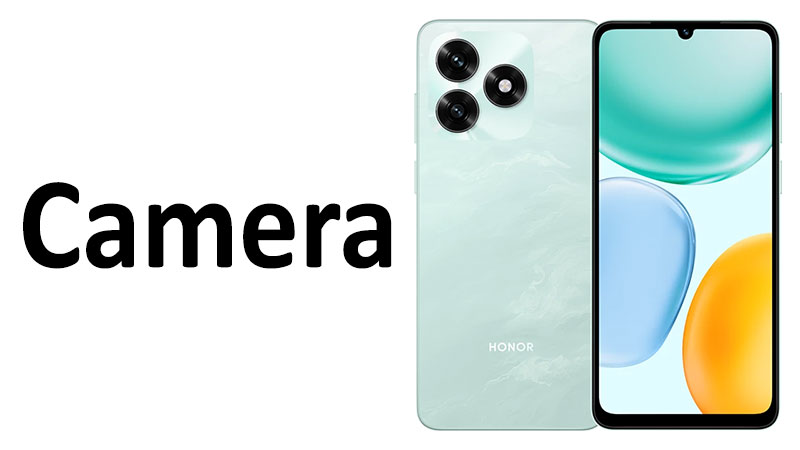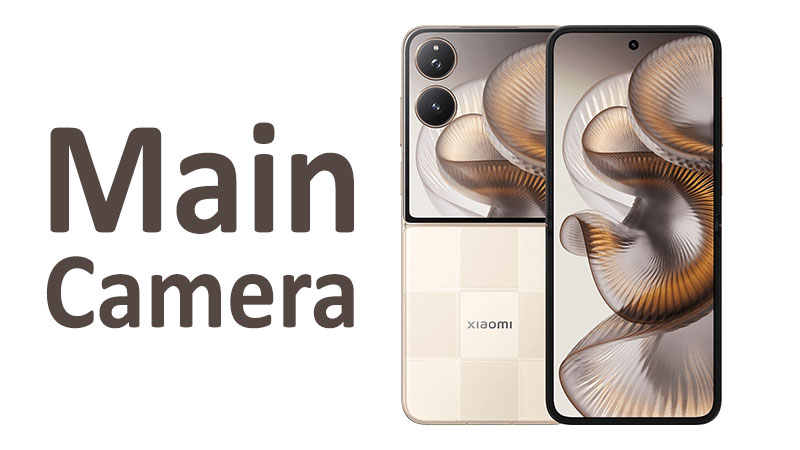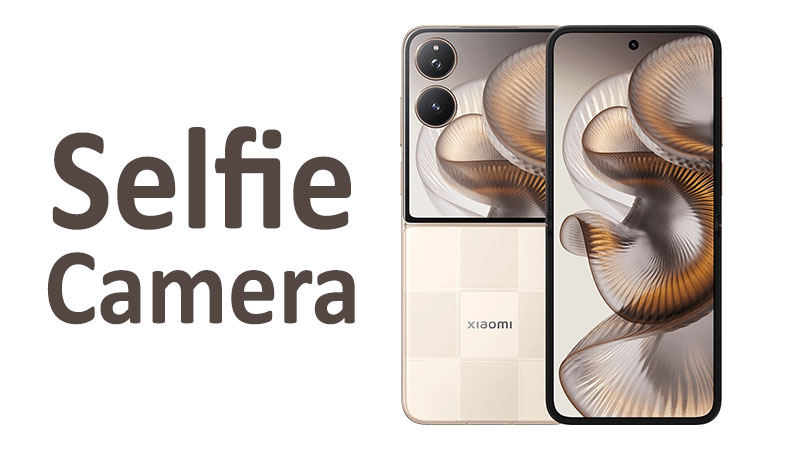The Honor X5c camera system is designed to meet the fundamental needs of the budget smartphone user. Many consumers are examining its technical specifications and overall imaging capabilities very closely. This detailed article explores every component of this device’s photography setup. We will carefully analyze the hardware constraints. We will also evaluate the software’s ability to produce quality results. Our main goal is to deliver a complete, SEO-friendly review for anyone considering the Honor X5c. This guide will help you understand the true value and limitations of this ultra-affordable camera.
A Comprehensive Review of the Honor X5c Camera System
The Honor X5c features a dual camera module on the rear. This setup includes a single main camera and an auxiliary depth sensor. This configuration is typical for devices prioritizing extreme affordability. The focus is on providing a functional primary shooter. The main sensor is a modest 13MP unit. This resolution is generally sufficient for casual photography and sharing. We will systematically examine these specific components. Then we can determine their impact on the final user experience.
Technical Specifications: The Primary Lens Detailed
A deep dive into the hardware is necessary for an objective performance evaluation. The Honor X5c places the entire photography load on its primary sensor. This design choice simplifies production and keeps costs low.
The 13MP Primary Wide Camera and Aperture
The main camera is the heart of the system. It uses a 13 MP sensor. It features a relatively narrow f/2.2 aperture. This aperture rating suggests limitations in challenging light conditions. The main camera also includes Autofocus, or AF. This ensures that subjects are rendered sharply when proper focus is achieved. The 13MP resolution captures enough detail for everyday photos. However, it cannot compete with high-megapixel sensors. This camera is designed for simple, quick point-and-shoot scenarios.
Specialized Comparison: The f/2.2 aperture is a notable limitation. For instance, the older Honor Play 10A boasted a much wider f/1.8 aperture. A wider aperture captures more light. Therefore, the X5c inherently struggles more in low light than many slightly higher-priced models. Its 13MP count is also lower than the 48MP or 50MP sensors found on popular competitor budget phones. The X5c clearly targets the entry-level user with these specifications.
The Role of the Auxiliary Lens
The rear module includes a secondary, auxiliary lens. The lens is not usable for general photography. Its sole function is to gather depth information. This depth sensor assists the main 13MP camera. It allows the software to accurately map the scene. The resulting data helps create a convincing bokeh or background blur effect. This is essential for the popular Portrait Mode. The lens has no independent shooting capabilities, such as macro or ultra-wide shots. Its existence solely supports computational features.
Autofocus and Regional Specifications
The main camera includes Autofocus, which is a necessary feature. Autofocus (AF) ensures moving subjects remain sharp. This is vital for capturing casual moments without blurring. The specifications indicate this setup is designated for MEA, SEA, AF, and Eurasia regions. This suggests a consistent camera package across these important emerging markets. However, the camera does not feature the faster Phase Detection Autofocus (PDAF). It uses a standard contrast-based AF system. This system can be slower in challenging light.
Analyzing Daylight Photography Performance
The performance of the Honor X5c camera is at its best under bright daylight conditions. Sufficient natural light mitigates the limitations of the narrow f/2.2 aperture. This allows the 13MP sensor to deliver its maximum clarity.
Detail, Resolution, and Clarity
Daylight images from the Honor X5c are generally acceptable. The 13MP sensor captures enough detail for viewing on a phone screen. It also provides adequate resolution for social media sharing. Fine textures, like those in brickwork or grass, are visible but simplified. However, the photos lack the detailed richness of higher-megapixel phones. Heavy cropping of daylight photos is not recommended. It quickly exposes the inherent resolution limits of the sensor. The images are processed to look clean.
Color Accuracy and White Balance
Honor’s image processing usually favors natural color reproduction. The X5c maintains this trend. The camera produces colors that are mostly realistic. They are generally appealing without being oversaturated. The auto white balance system performs reliably in clear outdoor light. It correctly interprets colors under direct sunlight. Consequently, outdoor scenes have pleasingly true-to-life tones. Blue skies and green foliage are rendered accurately. This provides a satisfactory experience for basic photography.
Dynamic Range and HDR Execution
Dynamic Range refers to the camera’s ability to handle extreme lights and shadows. High Dynamic Range, or HDR, is essential for balancing these areas. The Honor X5c includes a functional HDR mode. Users should activate this mode manually in bright conditions.
The HDR process on the X5c is basic but effective. It attempts to pull detail back from bright skies. It also works to lift shadows in darker corners. For a phone in this category, the dynamic range performance is respectable. Users will notice a slight processing delay when using HDR. This brief pause is necessary as the phone combines multiple images. Using HDR significantly improves the overall image consistency in high-contrast scenes.
Important Point for Buyers: Always rely on the dedicated HDR mode when shooting outside at noon. This simple action prevents bright areas from being completely washed out. It also prevents important details from disappearing into the shadows.
Low-Light and Night Photography Assessment
Evaluating the Honor X5c’s low-light imaging is a crucial test of its hardware limitations. This is where the budget constraints become most obvious. The narrow f/2.2 aperture significantly affects performance in the dark.
Impact of the Narrow Aperture
The f/2.2 aperture struggles to capture light efficiently. This forces the camera to compensate in two ways. First, it must use a slower shutter speed. This increases the risk of motion blur or handshake blur. Second, it must significantly raise the ISO sensitivity. High ISO levels are the primary cause of excessive image noise. As a result, photos taken in dim settings are often dark. They frequently feature considerable digital noise.
Noise Management and Detail Retention
The camera software incorporates noise reduction algorithms. These algorithms try to smooth out the grainy noise. This is necessary to make the image presentable. However, aggressive noise reduction has a side effect. It often smears away fine details and textures. Low-light photos from the X5c look soft and lack definition. Objects lose their sharpness, taking on a painterly effect. Detail retention is low when ambient light is scarce.
Specialized Comparison: Night Performance Against Rivals
The Honor X5c does not feature a dedicated, computational Night Mode. Many rival phones in the budget segment now use software to stack multiple long exposures. This technique drastically improves brightness and reduces noise. Since the X5c relies on simpler processing, it is easily outperformed in genuinely dark scenes. The Honor X5c camera is only suitable for well-lit indoor or street environments at night. It is not designed for capturing dark landscapes or night sky photography.
Video Recording Capabilities and Quality Analysis
The video specifications for the Honor X5c are basic and functional. It is capable of recording video at a maximum quality of 1080p at 30 frames per second. This resolution is the standard for basic high-definition video.
1080p Video Quality and Limitations
The 1080p footage is adequate for casual video recording. It provides sufficient clarity for quick clips and social media posts. The 30fps frame rate is standard and smooth enough for most general viewing. However, the camera lacks support for 4K resolution. This is expected in an ultra-budget device. Users who need ultra-high-definition video should consider alternatives.
More importantly, the phone does not include Optical Image Stabilization (OIS). This is a common omission at this price point. The camera relies solely on Electronic Image Stabilization, or EIS. EIS helps to smooth out minor camera movements. Yet, severe shakes or walking movements still result in shaky footage. For stable video, users should keep their hands as steady as possible. Using a small tripod accessory is also highly beneficial.
Audio Recording for Video
The quality of the sound captured with the video is generally clear. The internal microphone is designed for basic voice and ambient sound capture. It works fine for recording conversations or speeches indoors. However, the microphone struggles with background noise. Wind noise and loud environments negatively affect the sound clarity. For simple video applications, the audio recording is functional and clear enough.
Important Point for Buyers: The 1080p and lack of OIS confirm the Honor X5c is meant for everyday casual video use. It is a cost-effective solution for sharing memories. Do not purchase this phone for serious video production. The performance is satisfactory but not premium.
Reviewing the 5MP Fixed-Focus Selfie Camera
The front-facing camera on the Honor X5c is a simple component. It handles self-portraits and video calls. It features a 5 MP sensor with an f/2.2 aperture.
Self-Portrait Detail and Quality
The 5MP resolution is quite low for contemporary smartphones. Most competitors offer higher resolution selfie sensors. Consequently, selfies from the X5c lack fine details. Images often appear soft and slightly washed out. Enlarging or cropping these photos severely degrades the quality. The images are certainly usable for quick snaps. They are also acceptable for profile pictures on social platforms.
The f/2.2 aperture is a limiting factor in indoor lighting. The camera requires bright, direct lighting to produce a clean image. Otherwise, photos quickly become dark and noisy. Honor’s software typically includes simple beauty filters. These filters can soften skin texture and smooth facial features. This is often the primary reason users find the selfies acceptable.
Video Calling and Vlogging Suitability
The selfie camera supports video recording at 1080p resolution at 30fps. This is a major plus for video communication. This high-definition feed ensures clear video quality for calls on apps like WhatsApp or Google Meet. The quality is reliable for casual video chatting. It is also suitable for beginner vlogging or short social media stories. The consistent video quality compensates somewhat for the low still photo resolution.
Specialized Comparison: Selfie Limitations
The 5MP sensor is arguably the weakest aspect of the Honor X5c camera setup. It is a significant compromise made to meet the phone’s budget price. Buyers looking for highly detailed, professional-grade selfies should look elsewhere. Even minor upgrades in price often bring substantial improvements here. The X5c is purely functional. Its design priority was cost efficiency.
Camera Interface, Software, and Shooting Modes
The software experience is vital for any camera system. A well-designed application maximizes the user’s potential. The Honor X5c’s camera application is intentionally simple and easy to use.
Interface Ergonomics and Ease of Use
The camera interface is intuitive and designed for quick access. It features a clean, simple layout. Users can easily switch between the basic modes like Photo and Video. Core controls, such as the digital zoom and the flash icon, are readily accessible. The app is generally stable and responsive. This minimizes any frustration during casual use. The ease of use makes the X5c suitable for first-time smartphone users.
Essential Features: HDR and Panorama
The camera software includes essential features to enhance creativity. These modes are standard across most budget devices.
- HDR Mode: This feature, discussed earlier, helps manage extreme contrast. It is a necessary tool for bright outdoor scenes. It balances exposure across the frame.
- Panorama: The panorama mode is included for wide landscape shots. Users sweep the phone to capture an expansive scene. The software then digitally stitches the frames together. The resulting panoramic image quality is satisfactory. It is a great feature for travelers and outdoor enthusiasts.
- LED Flash: The built-in LED flash works well. It provides a focused burst of light for close-up photos in darkness. It is effective but can often create harsh shadows.
Autofocus and Shutter Speed
The camera uses a standard Autofocus (AF) system. This system is reliable in good lighting conditions. It quickly locks onto the subject when light is plentiful. However, the system slows down noticeably in dim environments. The time between pressing the shutter and capturing the photo is acceptable. There is a slight delay when processing HDR images. Overall, the speed is appropriate for a phone in this price bracket. The system is designed for patient, non-action photography.
Pros, Cons, and Essential Advice for Buyers
The Honor X5c camera system represents a series of carefully managed trade-offs. It is essential to clearly summarize these strengths and weaknesses. This helps the reader make an informed and realistic purchase decision.
Honor X5c Camera Pros
The system’s advantages are centered on its cost-effectiveness and core functionality. It provides a solid foundation for basic photography needs.
- Functional Main Camera: The 13MP primary sensor delivers acceptable, sharp images in good daylight.
- Affordability: The camera specs align perfectly with the phone’s budget price point.
- Reliable Autofocus: The AF system is dependable for ensuring subjects remain in focus during daytime use.
- 1080p Video Calls: The front camera supports clear, high-definition video for communication apps.
- User-Friendly Software: The camera app is simple and intuitive, making it easy for beginners to use.
Honor X5c Camera Cons
The phone’s budget status necessitates compromises in key areas. These limitations should be carefully considered by potential buyers.
- Narrow Aperture (f/2.2): This severely limits light intake. It harms low-light and indoor performance.
- Low-Resolution Selfie Camera (5MP): Selfies lack detail compared to competitive devices.
- No Advanced Stabilization (OIS): Video quality often suffers from handshake and movement blur.
- Absence of 4K Video: The phone is strictly limited to 1080p recording quality.
- Lack of Night Mode: Low-light performance is purely hardware-based and cannot compete with computational modes.
Essential Advice for Buyers
The Honor X5c is a good purchase for a specific type of user. Buyers should have clear, realistic expectations about the camera. It performs its basic tasks well but lacks advanced features.
Here are three crucial points for buyers to remember:
- Prioritize Function Over Features: This camera is ideal for taking simple, quick photos in well-lit settings. It is a reliable tool, not a creative one.
- Invest in Good Lighting: For acceptable results, especially with the selfie camera, always seek out the brightest available light source.
- Use It for Communication: The 1080p video recording on both cameras makes it an excellent device for video calls and chatting.
The Honor X5c camera is an honest product for its price. It offers satisfactory performance for basic daily use. It is highly recommended for users seeking an ultra-affordable phone with a functional camera.
Conclusion
The Honor X5c camera system is strategically built for the entry-level market. It emphasizes functionality and affordability above all else. The 13MP main camera is capable of capturing clear, attractive images in good daylight. Its Autofocus system is reliable. Furthermore, the inclusion of 1080p video for both front and rear cameras ensures excellent video communication quality. This is a significant strength for its price.
However, the phone makes necessary compromises. The narrow f/2.2 aperture and low 5MP selfie resolution are clear limitations. The absence of 4K video and advanced night modes restricts creative potential. Ultimately, the Honor X5c delivers exactly what it promises. It is a dependable device for casual photography and essential communication. This phone is a smart, economical choice for consumers who need a functional camera without a high price tag. It is an honest performer in the ultra-budget category.
FAQ
Is the Honor X5c camera good for low-light conditions?
The f/2.2 aperture limits light intake. This means the phone struggles in low light, producing noisy and soft images.
Does the main camera have Phase Detection Autofocus?
No, the Honor X5c uses a standard Autofocus (AF) system. It does not feature the faster Phase Detection Autofocus (PDAF).
What is the maximum video quality on the Honor X5c?
Both the main and selfie cameras can record video at a maximum resolution of 1080p at 30 frames per second.
Why does the Honor X5c have an auxiliary lens?
The auxiliary lens acts as a depth sensor. It is used to assist the software in creating portrait mode with blurred backgrounds.
Is the 5MP selfie camera sufficient for good photos?
The 5MP sensor is low in resolution. It is only sufficient for basic self-portraits and video calling in good light.



